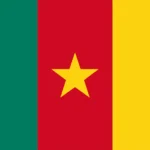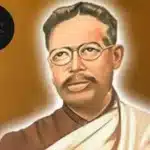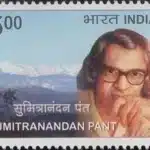Sovereignty Day of Montenegro, a momentous occasion commemorating the recognition of Montenegro as an independent state. Join us as we delve into the rich tapestry of Montenegro’s history, the significance of this day, and how it is celebrated by its resilient and vibrant community.
History of Sovereignty Day of Montenegro
Montenegro, a picturesque Balkan nation nestled amidst majestic mountains and glistening beaches, boasts a captivating history marked by struggles and triumphs. The roots of Sovereignty Day trace back to July 13, 1878, a pivotal moment when the Berlin Congress officially acknowledged Montenegro’s sovereignty, affirming its status as the 27th independent state in the world. However, it’s essential to distinguish this milestone from Montenegro’s Independence Day on May 21. Before basking in the glory of independence, Montenegro endured years of Ottoman rule, characterized by resilience and resistance. It wasn’t until a series of revolutions that Montenegro broke free from the shackles of the Ottoman Empire, paving the way for its eventual liberation under the Treaty of Berlin. Despite the newfound autonomy, governance rested in the hands of monarchs, notably Nicholas I, until the nation transitioned to a kingdom in 1910.
Montenegro’s trajectory took a turn in 1918 with its unification with Serbia, marking the inception of Yugoslavia. This union endured until the dissolution of the Socialist Federal Republic of Yugoslavia in 1992, leading to Montenegro and Serbia’s formation of the Federal Republic of Yugoslavia. However, the quest for self-determination persisted, culminating in Montenegro’s declaration of independence in 2006, severing ties with Serbia and solidifying its status as a sovereign state.
Significance of Sovereignty Day of Montenegro
July 13 holds a dual significance in Montenegro’s annals, not only marking its sovereignty but also commemorating the courageous uprising against Nazi occupation during World War II. This day serves as a poignant reminder of Montenegro’s indomitable spirit and unwavering resolve in the face of adversity. Beyond its historical significance, Montenegro beckons with a treasure trove of cultural marvels waiting to be discovered. While its pristine beaches allure sun-seekers, its ancient cities echo with tales of antiquity, adorned with medieval murals and exquisite architecture.
Despite its diminutive size, Montenegro’s cultural heritage is vast and diverse, encompassing a myriad of traditions and customs. From savoring local delicacies like cevapi and baklava to immersing oneself in traditional music and dance, there’s no shortage of experiences to indulge in. Sovereignty Day epitomizes the resilience and spirit of the Montenegrin people, celebrating their journey to freedom and self-determination. As festivities unfold, it’s a time to honor Montenegro’s heritage, savor its culinary delights, and immerse oneself in its vibrant culture.
Sovereignty Day of Montenegro Timeline
- 16th Century: Montenegro Gains Autonomy
- 1878: Montenegro Attains Independence
- 1918: The Unification With Serbia
- 1941: The Revolt Against the Nazis
- 2006: The Independence From Serbia
Despite its diminutive size, Montenegro’s cultural heritage is vast and diverse, encompassing a myriad of traditions and customs. From savoring local delicacies like cevapi and baklava to immersing oneself in traditional music and dance, there’s no shortage of experiences to indulge in.
Activities to Celebrate Sovereignty Day
As we honor the legacy of Sovereignty Day, here are some engaging activities to partake in:
- Savor Montenegrin Cuisine: Whip up classic dishes or dine at local restaurants to relish the flavors of Montenegro.
- Connect with Montenegrin Culture: Dive into Montenegro’s rich cultural tapestry by exploring its ancient cities and traditions.
- Treat a Montenegrin Friend: Extend the festivities by celebrating with Montenegrin friends, fostering cultural exchange and camaraderie.
Five Fascinating Facts About Montenegro
- Diverse Beaches: Montenegro boasts 117 beaches, each offering unique landscapes, from rocky shores to sandy stretches.
- Ancient Olive Tree: The Stara Maslina, one of the world’s oldest olive trees, has stood for over 2,000 years in Montenegro.
- Majestic Mausoleum: Montenegro is home to one of the world’s highest mausoleums, perched atop Mt. Lovćen.
- Tara River Canyon: Known as ‘The Tear of Europe,’ Montenegro boasts Europe’s largest canyon, a testament to its natural splendor.
- The Saga of Stefan Cernetic: Montenegro’s history is not without intrigue, including the tale of Stefan Cernetic, the faux prince charged with forgery.
FAQs: Unveiling Montenegro’s Charms
Let’s address some common queries surrounding Montenegro and Sovereignty Day:
Is Montenegro a country?
Yes, Montenegro is a sovereign nation situated in the west-central Balkans of Southeastern Europe.
What is the official language of Montenegro?
While Montenegrin is the official language, Serbian is widely spoken among the populace.
Do people in Montenegro speak English?
English proficiency varies, with Serbian being more commonly spoken.
Sovereignty Day of Montenegro Dates
Plan ahead to join in the festivities of Sovereignty Day:
- 2024: July 13 (Saturday)
- 2025: July 13 (Sunday)
- 2026: July 13 (Monday)
- 2027: July 13 (Tuesday)
- 2028: July 13 (Thursday)
Sovereignty Day of Montenegro stands as a testament to the nation’s enduring spirit and storied past.












